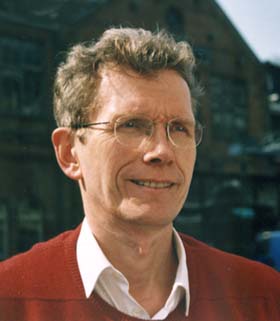 Feeling completely lost at gym, and then 'coming home'.
Feeling completely lost at gym, and then 'coming home'.  Feeling completely lost at gym, and then 'coming home'.
Feeling completely lost at gym, and then 'coming home'.
The Dutch version of this article has appeared in print in the Dutch PE teachers magazine, KVLO and in the online KVLO.NL version in March 2010.
Original Dutch language version.
On an inside wall of a small dance hall in the city of Haarlem, in the Netherlands the following text has been painted in very large letters, as a declaration of principles and as a hymn about living life in fullness:
“Work like you don’t need the money.
Love like you’ve never been hurt.
Dance like you do when nobody is watching”.
That is where I want to be. That is coming home. Having made a u-turn after 40 years, I have returned to that kind of dance and gyms in which alternative forms of body work take place, especially Biodanza (more about that a little bit later on).
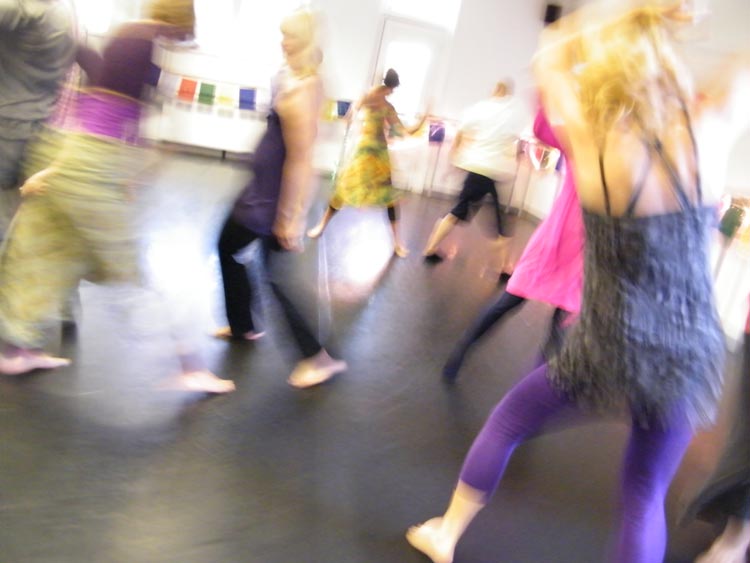
(Photo by the author in the dance hall, at the Lorenzkade address in Haarlem)
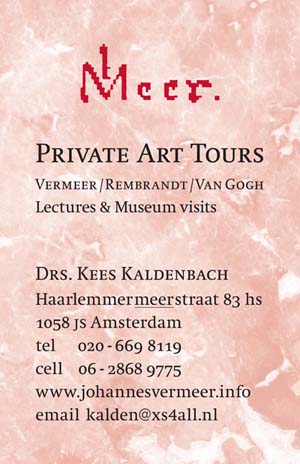 Gym lessons, or so I am told by current PE teachers in Holland and England, are mostly taught in a pleasant and didactically-sound manner. PE has even been made bearable and pleasant for that minority of school children with less of an aptitude for PE classes.
Gym lessons, or so I am told by current PE teachers in Holland and England, are mostly taught in a pleasant and didactically-sound manner. PE has even been made bearable and pleasant for that minority of school children with less of an aptitude for PE classes.
PE teachers from the current generation have no need to feel attacked by this article, for we are discussing results of gym didactics as applied in the years 1960-1975. I was born in 1953 and out of anger and self-protection I have stayed far away from any form of gym for well over 30 years.
In this article – beginning with my own negative experience - I will discuss statistics and personal statements about how PE was experienced by Dutch children who were good at sports, as well as by the small minority of schoolchildren who were unable to cope during their school careers.
During conversations with people involved with Biodanza (yes, I will explain what Biodanza is in a minute), it strikes me that there is a clear break between those participants who loved PE (and thus always loved doing sports and games) and those Biodanza participants for whom it is the first time in their whole lives that they have had a pleasant experienced in any PE hall.
This article shows a number of statements as well as a scientific report that Biodanza – and other forms of dance and alternative movement methods are suited to keeping ALL schoolchildren happy as well as providing a good way to feeling at home in physical education.
Three prior theses
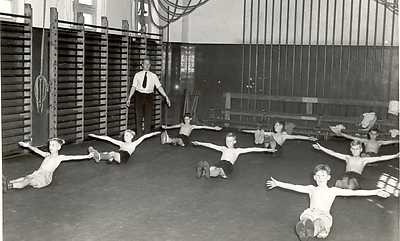 Thesis 1, formulated beforehand, on the basis of an estimate: A great majority (up to 90% of school children) experience standard PE with a high level of competition as wonderful.
Thesis 1, formulated beforehand, on the basis of an estimate: A great majority (up to 90% of school children) experience standard PE with a high level of competition as wonderful.
In order to study this statement I have executed random street interviews in Amsterdam, The Netherlands (see below and Note 1).
Thesis 2, formulated beforehand: A minority of an estimated 10% of school children experience PE as a punishment, degradation and feeling lost, alienated, homeless.
In order to study this thesis I have executed random street interviews in Amsterdam, The Netherlands and in a circle of Biodanza participants (Note 2).
Thesis 3: Biodanza and other forms of alternative body work contain core qualities which transform a feeling of alienation in the latter minority group into a feeling of “coming home”.
In order to study this thesis I have executed interviews in a circle of Biodanza participants (Note 3).
Alternative forms of body movement
Here I would like to loosely define alternative forms of bodywork in the following listing of activities: expressive dance, free Latin rhythm dance, rebirthing, breathing exercises, tribal dance, the PE adapted in circles of Rudolf Steiner schools, tantric forms of bodywork, free body movements with music and percussion, creative movements. Generally these are holistic forms of movement (holos being the Greek word for whole, wholeness). Biodanza also belongs to that group of alternative forms of bodywork.
What is Biodanza exactly?
Biodanza on the beach, Zandvoort. Summer 2009.
Biodanza
Biodanza is a form of dance aimed at experiencing being in the here and now, an experience of intense feeling and being alive, in contact with oneself and the other, the group. The movement is first outward-bound, rhythmic, active and playful and invites the participant to show oneself, to find one’s place within the total space. Slowly the dance elements change to softness and melody and the movement is more inner-bound (Note 4).
Biodanza always opens in a circle of people holding hands and who welcome each other by looking at each other. The teacher talks to the group, giving instruction and introducing each new part. The dancers remain silent throughout the class – in order to become properly incarnate (to fully move into the body). What happens in class is a celebration of life at its fullest and to “experience the poetry of life” in a system of dance and movement towards two seemingly opposed movements:
On one hand Biodanza applies a movement going inward, inviting an inner experience, in the form of stillness and regression to the period of having been a small child. Moving away from the language-brain towards the feeling. Picture this accompanied by music by Enya, Celtic flute, Indian percussion.
On the other hand, Biodanza applies a dance form aimed at meeting the other participants, with eye contact, movement contact with or without touch. This invites the dancers to gain one’s own place in the world. This approach gives space to contact and growth with playful, humane, creative opportunities. Many, many kinds of music are applied within this field, from Queen and Latin-American music to foxtrot, 1950s film music to classical music.
As I have been able to experience during the last five years: dancing without having to learn proper steps, blossoming in non-verbal communication, becoming poetic and playful, increasing compassion, developing body language, mirroring movements, reflecting on oneself. To attract, experience and let go. Living through play as a free-style play, in other words to increase empathy, accepting and appreciating one’s own level, feeling, grounding, breathing, meditating in movement. Discovering dark places on the inside and not running away from that darkness. In order to unfold as amore complete human being. Embracing. Meeting and including, thus not excluding. That alternative pathway is aimed at being loving and cooperating without having to win or lose a game. Compassionate. Yielding to the other, with insight, humanity.
Biodanza was developed in Latin America by the psychologist Rolando Toro. Initially his system was developed for adults, for “normal” people but also for groups of inmates in penal and psychiatric institutions. The effects turned out to be so healing and transforming, that the movement has grown explosively worldwide (Note 4). For schoolchildren adapted forms have been recently developed.
From my own experience I developed the three theses mentioned above; the answers are given below.
Question 1: (literally formulated, thus without biased words in the question): “How did you experience PE in your own elementary school and secondary school / high school?”
Answers from random interviews held in Amsterdam, November 2009. N= 43 persons, women and men in the age group of 40 – 70 years.
Total 43 persons |
Nice / very nice PE |
Mediocre / neutral PE |
Generally bad PE memories |
Do not know / have had little PE |
Men |
15x = 34% |
1x = 2,4% |
1x = 2,4% |
2x = 4,7% |
Women |
19x = 44% |
2x = 4,7% |
2x = 4,7% |
1x = 2,4% |
Total |
34x = 79% |
3x = 6,8% |
3x = 6,8% |
3x = 6,8% |
Question 2 for thesis 2, asked in circles of Biodanza participants: “How did you experience PE in your own elementary school and secondary school / high school?”
13 participants. The group with negative experiences turns out to be relatively strongly over-represented in this Biodanza group, being 5 out of 14 = 36%.
Name |
Age, male/f |
About PE |
About Biodanza |
|
|
|
|
Giovanna |
46, fem |
PE, was a problem area, I was insecure, not grounded |
Freer movements, a felling of contact, listening to your body. |
Marjolein |
46, fem |
Oy. Horrible that climbing gear. Ball sports were OK. |
I find myself and everybody else wonderful. My little heart opens up. |
Kees (author) |
56, m |
Punishment camp. 99% competition struggle and 1% compassion. |
Yumminess. Playground. Emotion. |
Suzanne |
48, fem |
Pressure to perform, that was negative, for the rest I have neutral feelings about PE. |
To be who you are. |
Wieke |
51, fem |
Not so nice, especially distress in exercises on the rings, bridge. Ball games were fun. |
Attractive, moving in a free manner. |
The group with positive experiences about regular PE classes is relatively smaller in this Biodanza group, 9 out of 14 = 64%.

Susan |
Ca 40, fem |
I was one of the captains in PE. Always wonderful. |
Almost finished as a Biodanza teacher. |
Dorien |
46, fem |
Neutral, not ecstatic. |
Happy, creative, freedom, everything is allowed. Walking up the pathway together, in feedback. |
Jeroen |
61, m |
Nice movement. |
Most of all enjoying stillness. Intimacy, warmth, contact. |
Paul |
56, m |
Positive, pleasure, running about. |
Movement from the feeling inside the body, letting movement flow in contact. |
Leo |
49, m |
Very nice. Enjoyment. I was quite good at it. |
Establishing contact Fully enjoying. Dissolving into music and dance. |
Rina |
57, fem |
Nice, I was good at PE, athletics and swimming. |
Moving from a feeling of freedom and contact with the other. |
Roel |
44, m |
PE was wonderful. I was a reasonably good at sports. |
Complete expression, music and contact. |
Sjaak |
45, f |
Gym was okay enough. I didn’t like the fact that you were assessed for performance. Never selected for team sports. |
Moving freely. Being equal, in contact with oneself and with others. |
Wim |
44, m |
Rules were good. Varied measure of success depending on the teacher |
Tuning into the group feeling. Seeing developments. |
An interesting subset consists of the current generation of Dutch Biodanza teachers. Six randomly selected teachers gave these answers to my e-mail query.
|
|
About PE |
About Biodanza |
Teaches in |
Paul |
Ca 50, m. |
“PE lessons were highly competitive in England. The whole school was sports-oriented. Happily I was a strong sportsman.” |
“Coming home. Gentleness.” |
Amstelveen, The Netherlands |
Mariette |
Ca 40?, f. |
“Gymnastics were OK, but the eternal game of softball was tedious. Sport as a body working up sweat and a mind that has a fight between quitting or continuing.” |
“I love Biodanza as it combines pleasure in movement with a feeling of creativity. I am totally into it.” |
Amsterdam |
Yvonne |
Ca 40? f. |
“I was always quite miserable during PE. I felt lost, not sporty, strong and supple at all.” |
Is now a successful Biodanza teacher |
Arnhem |
Monica |
Ca 40, fem |
“I was at the top of the class in gym. Highly gifted in the art of moving. But as in so many winners there was also a deep rooted uncertainty, however much I accomplished and triumphed.” |
“For that I needed Biodanza... in order to tap those resources, going from outer accomplishment to inner perception – and to start feeling and learn how to trust on loving that which lives inside in heart, soul, body!” |
Amstelveen |
Beatrix |
Ca 40, f. |
“PE was always a favourite class at school. I relished the variation of sports. Every PE class was a new surprise.” |
“Biodanza is lovely because of the stimulating music and the freedom to bring oneself to expression. With individual and group elements. It trains the senses, helps to let your feelings flow, and to express them in a natural way. For me, Biodanza is the ultimate way to bring body and soul into movement,” |
Alkmaar |
Rasal |
Ca. 50, m |
Sportsman. Highly trained in England in an aggressive type of fighting sport. Suddenly realising: why would I want to bash the other? |
Now didactic Biodanza teacher |
Alkmaar |
A separate mention with * is for Esther (female, 52 years). She was born with a body that was missing the left-hand bottom leg, and with a particularly small right hand. First-class mind. Had to use a wheel chair in a special secondary / high school. Unable to use her leg prosthetic after her 21st year and permanently confined to her wheelchair.
|
|
Over Gym lessons |
Over Biodanza |
Amstelveen |
Esther, |
52, fem |
The PE teacher forced me to participate in class, climbing the rack and falling out of it, and the same with the rings. Also on the BOK. Learned techniques for falling. The teacher was fierce and now she sees that provided good challenges. |
In the Biodanza class she dances in her wheelchair and sometimes a few minutes of standing up or laying down. “Biodanza gives me a lot. I have learned to know my body better and learned to accept its condition. I have become conscious that I have a right to be. Less geared to perform. Biodanza: “I think it is sexy!” |
Lessons in Amstelveen, The Netherlands |
For the other participants in the Biodanza class Esther has become a radiating source of inspiration and a touching “biodancera”.
Scientific research
In Leipzig, Germany Dr. Marcus Stuck researched the short-term the long- term effects of Biodanza on participants in terms of health and happiness, and those effects were statistically compared to an Aerobics group as control group. The result is presented in German on the Internet. It shows very positive results on short-term results but also in the long run. (Note 6)
Biodanza classes are for adults, often aged 30+. A wonderful new development is the emergence of Biodanza for children. (Notes 7 and 8).
Memories by the author
 Honestly, I am still angry. The series of gym classes which I experienced between 1960 and 1975 were composed, in my memory, of 99% competitive struggle and 1% compassion. What I witnessed was a “survival of the fittest”, from my elementary school right up to teacher-training college (the latter introduced a bit of folk dance, I must admit). Obviously many other school children and students must have experienced the same classes as wonderful.
Honestly, I am still angry. The series of gym classes which I experienced between 1960 and 1975 were composed, in my memory, of 99% competitive struggle and 1% compassion. What I witnessed was a “survival of the fittest”, from my elementary school right up to teacher-training college (the latter introduced a bit of folk dance, I must admit). Obviously many other school children and students must have experienced the same classes as wonderful.
The PE class of that time (note that I am not referring to now), has during my own long schooling experience, seldom risen above the level of mindless struggle and brainless competition. In the worst of circumstances it thus formed a training camp in which the latent strong boys pecking order in the classroom could develop and derail.
The behaviour of human being to human being was twisted to a caricature of what it is to truly be a human being. In that “faulty / failing” PE lesson, a renewed pecking order developed, which decreed the behaviour during the following school days, both in the classroom and in group behaviour on the playground. Once again with 99% worth of competition and 1% compassion.
For less successful children, that type of competitive PE was a recurring difficult point in a weekly schedule full of basic fears and stomach-aches. It turned into a Hobbesian and Darwinian hellish circus in which the stronger children wanted to win whatever the cost - in order to be the hero and to put the other, weaker children down in their deserved places.
How to value the PE teachers of that time? To the best of my memories they were a bunch of Feldwebels who beat sticks on the ground in order to indicate the tempo to the out-of-breath troupe running around in circles. And in the next segment of the gym lesson subsequently inviting the children in activities to beat each other. Time and time again.
 Mind sets: Darwinian,
Hobbesian
Mind sets: Darwinian,
Hobbesian
I continue on the theme of “survival of the fittest” and try to find out what could have been the mindset behind it all. Philosophically speaking that kind of gym lesson – I think – was a repeated brainwashing of how to conquer the other individual or team: beating the opponent.
Competition is an instructed form of how one can exist in the world. Competition is based upon choices and ideas, described, among others, by Charles Darwin (1809-1882) with his harsh lesson of “survival of the fittest”. Reasoning backwards from the present, the gym teachers of the 1960s and 1970s made particular choices in the spirit of Darwin and the spirit of competitive behaviour.
In the run of the mill gym class there were – as I witnessed – many losers and just a few winners, the top dogs. In class those children picked up that winning, and therefore defeating the other was quite common. From the beginning it was an attitude of differentiating, a process of selection, dividing us and them, me and you. A training in becoming harsher, in triumphing, and in learning how to take losses. Becoming hardened.

For the small group of children who by nature – on the level of their soul – are not aggressive and not into competition, recurring humiliation often began during the selection of two opposing teams. The gym teacher appointed two captains, who in their turn handpicked a team of fighting-fit children, the winners. There are children who were the last ones picked every time during their entire school careers. I know a few by name, myself included. Those children have developed a certain less positive outlook on PE and gym teachers.
What moved those teachers to select this didactic pathway? We have just mentioned Darwin. Harshness may have been considered a preparation for life in a hard, competitive outer world. That state of affairs of war of all against everybody (bellum omnium in omnes) was described a few centuries earlier by the philosopher Thomas Hobbes (1588-1679) in his book ‘De Cive’. That volume describes a preparation for the raw world in which “homine homo lupus est”, man is a wolf to other men. Hobbes lived during the period of the English Civil war, and that sort of environment does not really contribute to a positive way to look upon your fellow human being.
Ethology
Biologist and researcher of higher primates Frans de Waal, who is currently very influential also outside of his field of expertise, has developed quite another vision on whether man is a wolf to other men in the first place – or instead by nature a sentient, and helpful sociable creature.
De Waal maintains that the quality of life in being either a primate or a human being and finding a position within the social group pivots on compassion, feeling empathy, offering help, and thereby gaining a “positive social bank account” and having allies. He also describes the effects of harsh and incommunicative behaviour. De Waal has reported patterns of dominance, bluffing behaviour and awe-inspiring behaviour in chimpanzees who seek coalitions in order to reach a certain target. The advantage of studying chimps is that they are so transparent. The drawback of humans and human children is that they also have a tough political programme but that they are often cunning and walk devious ways. The recently published book by De Waal about the value and role of this quality of being sentient is titled: A time for empathy (Note 5).
And now the joke to end all jokes
At the end of secondary school I was 19, a soft-spoken youngster with high ideals and lofty ideas of wanting to become a better teacher for the coming generation than I had ever have had or experienced. So in 1972 I went to the teacher-training college in the idyllic small town of Bergen, North-Holland. Part of the curriculum was a series of gym classes given by the active and macho docent team “Hiep and Huik”. A wide package of gym hall sports, ball games and field sports. And a bit of theory.
Four years later, in 1976 I was an elementary school teacher, just filling in as a substitute in Amsterdam-Centre and Amsterdam-West, the areas of the disadvantaged classes. Two days here and two weeks there, so it went on for a full year of teaching. Seldom have I failed so miserably. During an entire year it was a struggle to maintain order in the classroom, chalk in hand and raising my voice time and again.
The most visible disorder came up, yes, you have guessed it, during PE classes. If it gets out of hand in a classroom it is a mess - and this becomes exquisitely visible during a gym class. After that year of teaching I suddenly stopped. Basta. A wise decision. Realistic and frightening dreams of physical education classes haunted me for many, many years after.
Conclusions / Crucial moments of insight
 What are the crucial moments of insight?
What are the crucial moments of insight?
1) There was a serious flaw in PE didactics in the years 1960-1975. For some 90% of the generation of people now aged 40-70, PE class was positive or neutral, whereas it was a horrific event for about 10% of the students involved.
2) Biodanza now yields chances to reach out to that 10% of people who do or did not make it in regular PE class. Biodanza for children exists.
3) People who were exposed to old-style gym classes are now finding their way back into the gym with a U-turn construction via Biodanza
= = = = =
About the author: Drs. Kees Kaldenbach was born in 1953 and lives in Amsterdam. Currently an art historian, author, holistic masseur and writer he is also active in Tantra and Biodanza. Email
kalden@xs4all.nl
= = = = = =
NOTES
 Note 1. Answers from random interviews held in Amsterdam, November 2009. N= 43 persons, in an exit poll by the GP in Amsterdam. Age group has been chosen for comparison to the age group in Biodanza.
Note 1. Answers from random interviews held in Amsterdam, November 2009. N= 43 persons, in an exit poll by the GP in Amsterdam. Age group has been chosen for comparison to the age group in Biodanza.
Note 2. See also note 1. Answers from random interviews held in a dance group in Haarlem, The Netherlands, November 2009. N= 13 persons.
Note 3. Answers from random interviews held in Haarlem (13 persons), Amsterdam (2 persons) and by e-mail (5 persons), in November 2009.
Note 4. Just published: Rolando Toro, Biodanza. Muziek, beweging en expressieve communicatie voor a harmonieuze ontwikkeling van de persoonlijkheid, Published by The Zaak, Groningen, 2009.
An Italian edition exists as well.
Rolando Toro is the founder of the movement and gives this definition on page 25: “Biodanza is a system of human integration and renewal of the organism, of affective re-education and re-learning the initial functions of life. Her methodology (the method system) consists of stimulating integrating vivencia’s by way of music, singing, movement and encounter situations within a group.”
The movement is alive and well in many western European countries but has not quite taken root in the USA.
Note 5. See Frans de Waal, Chimpanzee politics, 1982: "Politicians are vociferous about their ideals and promises but are careful not to disclose personal aspirations for power. Chimpanzees on the other hand, are quite blatant about their baser motives. Their interest in power is not greater than that of humans; it is just more obvious." In his latest book, 2009: A time for empathy he describes affectionate behaviour and shows that in the brain of higher primates exactly the same areas become active as is in human beings.
Note 6. Dr. Marcus Stuck from Berlin, Germany did research in Leipzig. The result is here (find it via Google: Marcus Stuck Biodanza)
http://www.schibri.de/?a=bookviewer&ISBN=978-3-937895-91-8
Note 7.
Google these search terms:
Biodanza + name of local city
Biodanza for children
Meditation for children.
Note 8.
Dominique van Breenen has written on Biodanza and Sports in his final paper in the Biodanza teacher training.
http://www.Biodanzaplezier.nl/
= = = = = = = = = =
This article was published in Dutch in the KVLO magazine, March 2010 under the title: Ontheemding en daarna “thuiskomen”. Statements over gym en alternatief lichaamswerk, met name Biodanza. See Responses on this article.
Links in DUTCH, with lots of photos
Biodanza on the beach in Zandvoort.
Biozanza with Ursula in Amsterdam.
Haarlem Biodanza with Susan is ook een heel goede docent - die af en toe lessen geeft in Haarlem: en zie ook www.Idanza.nl.
Kundalini-shocks
About the author :
This is an article by Kees, a 'biodancero') who takes a weekly taste of Biodanza and has started to grow and blossom. Has danced in Amsterdam with many teachers. Attended the international biodanza congress with Rolando Toro in Vierhouten, Holland. is pretty knowledgeable.

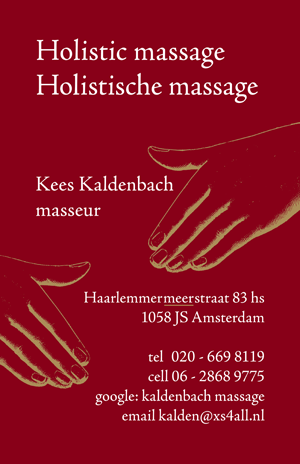 Reaction,
questions?
Reaction,
questions?
Center for Applied Massage Art - Kees Kaldenbach, kalden@xs4all.nl. Haarlemmermeerstraat 83 hs, 1058 JS Amsterdam (near Surinameplein, ring road exit s-106, tram 1 and 17). Telephone 020 669 8119; cell phone 06 - 2868 9775. Open seven days a week.
Masseur Kees Kaldenbach is collaborating with a number of masseurs and masseuses in Amsterdam. He is also active as a masseur in the finest and most luxurious hotels.
I give this massage at various addresses: at my home address (see above), or at your own home or at your hotel.
Lichaam & Ziel [Body & Soul] is registered at the Amsterdam Chamber of Commerce, number 3419 6612.
See Akademie voor Massage en Beweging www.akademie.nl
![]()
![]()
![]()
![]()
![]()
![]()
Cool background Philosophy inspired by Wilhelm Reich
A quotation from the book by Priscilla Kapel: 'The Body Says Yes : Muscle Testing Tunes into your Body's Needs' 1981:

"The human body has been cherished since time immemorial as an instrument of pleasure and an object of aesthetic delight. Our body is our most intimate posession. As the carrier of our consciousness, it represents the only tangible evidence we have of our existence. Through our feelings about it, and our use of it, we define and express our personal identity. We feed it, train it, worry about it, suffer over it, adorn it with clothes, decorate it with ornaments, revel in its sensations, and marvel at its intricacy and beauty." (...)
--- === --- news flash --- === --- 0 --- === --- news flash --- === ---
Psychological Bulletin, January 2004 highlights
MASSAGE THERAPIY AGAINST DEPRESSION
Psychologists at Illinois University have researched effectiveness of massage therapy. A series of visits to the masseur may reduce depression, anxiety and pain. Even single visits may help alleviating anxiety and pain and may reduce hypertension and a high heart rate.
Psychological Bulletin, January 2004. Updated July 2916.
For search engine: Adverse effects of regular Physical Education, gymnastics, pressure and positive effects of Biodanza.,